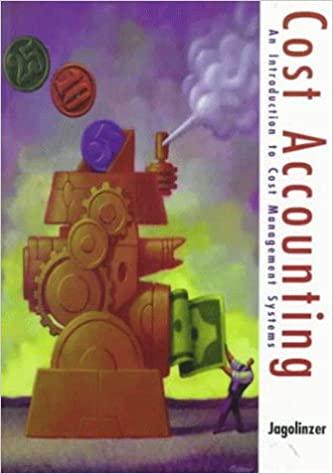The assignment of costs to the goods sold and to inventory using specific identification is the same for both the perpetual and periodic systems. A) True B) False A company received a bank statement with a balance of $6,000. Reconciling items included a bookkeeper error of $300-a $300 check recorded as $800-two outstanding checks totaling $840, a service charge of S21, a deposit in transit of $250, and interest revenue of $19. What is the adjusted bank balance? A) $4,950 B) SS,110 C) $4,608 D) $5,410 8. 9. Regardless of the inventory costing system used, cost of goods available for sale must be allocated between A) beginning inventory and net purchases during the period. B) ending inventory and beginning inventory C) net purchases during the period and ending inventory. D) ending inventory and cost of goods sold. 10. Which of the following items will not appear as deductions on a bank statement? A) NSF B) EFT C) Service Charge D) Deposits 11. Accounting information systems: A) Collect and process data from transactions and events. B) Organize data in useful forms. C) Communicate information to business decision makers. D) Are crucial to effective decision making. E) All of the above. 12. Internal control procedures include: A) Procedures to ensure reliable financial reports. B) Safeguards to protect company assets. C) Policies to direct operations toward common goals. D) Methods to achieve compliance with laws and regulation. E) All of the above. 13. The control principle for accounting information systems requires that the A) Benefits from an activity outweigh the costs of the activity B) System report useful, understandable, timely, and pertinent information for effective decision making. C) System must have intermal controls. D) System adapt to changes in the company, business environment, and needs of decision makers E) System conform with a company's activities, personnel, and structure. ROROUGH OF MANHATTAN COMMUNITY COLLFC 14. The flexibility principle of accounting information systems requires that the: A) Benefits from an activity outweigh the costs of the activity,t B) System report useful, understandable, timely, and pertinent info for effective decision making. C) System aid managers in controlling and monitoring business activities. D) System be able to adapt to changes in the company, business environment, and needs of decision makers. E) System conform with a company's activities, personnel, and structure. 15. The sales journal is used for recording: A) Credit purchases B) Credit sales. C) Cash sales. D) Cash purchases. E) Cash receipts. 16. The purchases journal is used for recording: A) Credit purchases. B) Credit sales. C) Cash sales. D) Cash purchases. E) Cash disbursements 17. Accounting information systems are designed to capture information about a company's transactions and events and to provide output including financial, managerial, and tax reports. A) True. B) False. 18. The five fundamental principles of accounting information systems are: A) Control, accountability, relevance, compatibility, and flexibility B) Historical cost, relevance, compatibility, flexibility, and cost-benefit. C) Control, relevance, compatibility, flexibility, and safety D) Control, relevance, compatibility, flexibility, and cost-benefit. E) Control, relevance, compatibility, timeliness, and cost-benefit. 19. The special journals of many accounting systems include the: A) Sales jounal. B) Purchases journal. C) Cash receipts journal. D) Cash disbursement journal. E) All of the above. 20. When a company uses special journals, the general journal is used for selected transactions and events including: A) Recording adjusting transactions. B) Posting transactions to special journals. 1@eo00 C) Accumulating debits and credits. D) Collecting detailed listings of amounts. E) Recording cash receipts 21. A subsidiary ledger A) Includes transactions not covered by special journals. B) Is a listing of all of the accounts of a business. C) Is a listing of individual accounts and amounts with a common characteristic. D) Is also called a general ledger E) Is also called a special journal. 22. A cmandiny oder hat contains a separate account for each supplier (creditor) to the company is a(n): A) Controlling account B) Accounts receivable ledger. C) Accounts payable ledger D) General ledger E) Special journal. 23. Acceptable inventory methods include: A) LIFO method. B) FIFO method. C) Specific identification method D) Weighted average method. E) All of the above. 24. A company had the following purchases during the current year: anuary: 10 units at $120 February: 20 units at S130 May September: 12 units at $150 November: 10 units at $160 15 units at $140 On December 31, there were 26 units remaining in ending inventory. These 26 units consisted of 2 from January, 4 from February, 6 from May, 4 from September, from November. Using the specific identification method, what is the cost of the ending inventory? and 10 ) $3.500. B) $3,800. C) $3,960. D) $3,280. E) $3,640. 25. A company had inventory on November 1 of 5 units at a cost of $20 each. On Novembe 2, they purchased 10 units at $22 each. On November 6 they purchased 6 units at $25 each. On November 8, 8 units were sold for $55 each. Using t method, what was the value of the inventory on November & after the sale? he LIFO perpetual inventory A) $304









